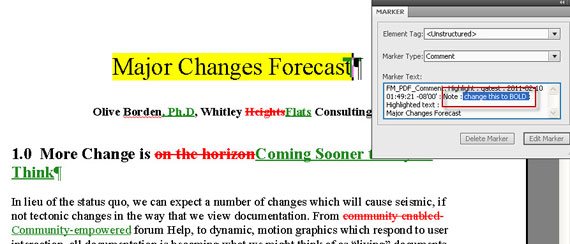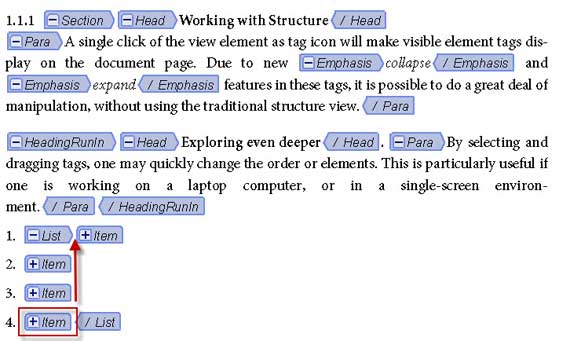How Adobe Technical Communication Suite 3 Helps Translation
Single-source publishing, Rich Media, Cloud-based Collaboration and accessible XML publishing are just four of the significant capabilities that Adobe’s Technical Communication Suite 3 brings to multilingual projects. This powerful suite (often referred to as TCS3 or Tech Comm Suite) combines three of the more popular products for technical communications: FrameMaker 10, RoboHelp 9 and Captivate 5. Two additional products useful to techcomm are bundled as well; Adobe Acrobat X Pro and Photoshop CS5.
Adobe identifies the following areas as key strengths for the new release of Technical Communication Suite:
- Social Media, via publishing to Adobe’s AIR platform with moderated comments,
- User-generated Content, via RoboHelp’s External Content Search,
- Multi-device Publishing, which has been extended beyond PDF and HTML to include the ePub XML standard for tablets and eReaders,
- Rich Media and Video, which have been extended to include many new formats,
- Cloud-based Collaboration via comments in PDF has been extended to RoboHelp as well as FrameMaker and
- XML Publishing has been extended to support DITA 1.2, along with several enhancements to make FrameMaker’s structured editing user interface even friendlier.
This blog focuses on functional areas and product strengths that are particularly significant for projects being translated and localized into multiple target languages. We will highlight areas where Tech Comm Suite can lead to a reduction in costs associated with source content creation and billable time during the translation process with your translation agency.
1. Single-source publishing via FrameMaker and RoboHelp
Previous versions of FrameMaker, RoboHelp and Tech Comm Suite have provided some degree of integration, but it wasn’t 100% “seamless.” Tech Comm Suite 3 has reduced the publishing cycle down to practically a single click to output FrameMaker content through RoboHelp to a variety of formats. A single click of the Publish menu within FrameMaker now updates RoboHelp files and produces accurate output, without several steps required with older software. In addition, RoboHelp will now change the display of the icon for a document component to indicate that the FrameMaker source file has changed.
Expanded multichannel and multidevice publishing capabilities allow swift output to print, PDF, Adobe AIR, WebHelp, XML and HTML. This includes creation of content which can display on eBook readers, smart phones and tablets.
2. Publish FrameMaker or RoboHelp output to ePubs
 We have all seen the explosion of eReaders and mobile devices for accessing commercial and technical publications in the past year. Robohelp and FrameMaker support the ePub standard, which produces “resizable” fonts for content readable on nearly any device, from a Blackberry or iPhone to an iPad or eReader.
We have all seen the explosion of eReaders and mobile devices for accessing commercial and technical publications in the past year. Robohelp and FrameMaker support the ePub standard, which produces “resizable” fonts for content readable on nearly any device, from a Blackberry or iPhone to an iPad or eReader.
Predefined templates make this a relatively easy process to accomplish, and customers do not have to be XML experts to obtain good results.
3. Improved review workflow
PDF format is by far the most common format used by linguists and translation company desktop specialists for linguistic review and format review of multilingual tech doc projects. This is a critical step in document translation. Tech Comm Suite (especially FrameMaker 10) allows swift creation of PDF files optimized for annotations and comments in either Acrobat or Acrobat Reader. You may import PDF comments and annotations directly into either FrameMaker or RoboHelp. The screen capture below shows how imported PDF comments and annotations display within FrameMaker 10.

One big improvement with FrameMaker 10 and Tech Comm Suite 3 is that as the cursor floats over an imported PDF annotation or comment, a timestamp and ID for the reviewer is displayed in the lower left corner of the workspace. This makes it practical for translation company team members to import PDF comments from multiple linguistic reviewers, and be aware of which reviewer made which comment.
4. Photoshop’s content-aware fill for internationalizing images
Tech Comm Suite is bundled with the latest version of Photoshop, which adds an especially powerful tool for making images more appropriate for a global audience. Many technical communication content creators are used to casually importing sample clip art that may have an element (e.g. traffic sign) that is very specific to North America. Photoshop’s latest version has a new feature called “content-aware” fill. This allows the user to make a “lasso” around an unwanted element, and have Photoshop automatically “delete” the lassoed image by replicating and repeating the background.
This tool would most frequently be used by clients rather than their translation agencies. However, since Photoshop is integrated in Tech Comm Suite, translation agency desktop publishing specialists can invoke Photoshop by simply double clicking on an imported *.psd file if an image required touch up. A typical example would be if the *.psd file included a text layer that requires translation.
5. Replace multiple static illustrations with one Captivate video
Captivate may be used to create motion capture with automatic captions (e.g. labels when SW buttons are clicked) and software or environment simulations. In short, Captivate has become a powerful eLearning tool, and is an ideal tool for creating brief, motion-based tutorials.
Since Captivate is integrated in Tech Comm Suite and can be invoked (once an image is imported) from within FrameMaker, it is an ideal solution to replace the traditional string of progressive screen captures that were often used to illustrate a step in product or software usage. In other words, instead of having Figure 9.3 through Figure 9.11 illustrate “snapshots” of the screen when various user interface tools are clicked, import one Captivate video into FrameMaker, which illustrates all the steps on one page as a “movie.” FrameMaker 10 has been further enhanced in this regard by allowing you to choose a static JPEG file as the “poster” or image that displays where the Captivate video may be played in PDF output or in HTML.
The benefits to using one Captivate video over multiple static images are obvious:
(a) page count is substantially reduced, (b) captions may be exported, translated, and reimported back into Captivate, (c) users are more comfortable with full motion video due to increasing exposure to YouTube and other rich media social networks and (d) with only one Captivate image to deal with, you do not have to worry about progressive screen captures being displayed out of sequence.
Information on how to import movies, SWF files, and 3D objects may be found in Adobe online help for FrameMaker 10.
6. Swift ramp up time for DITA authoring
FrameMaker 10 has full support for DITA 1.2, which has greatly extended the power of both FrameMaker and Tech Comm Suite. Extensive improvements to FrameMaker’s user interface make XML authoring and DITA much more accessible than with earlier versions.
This is significant to translation projects because any competent translation agency has staff with advanced FrameMaker skills. Customers and translation agency staff alike can easily migrate into complex XML and DITA applications, using FrameMaker’s familiar environment. The universal availability of FrameMaker within most translation agencies eliminates the need for extensive training on a new tool by your translation agency staff.
![]() FrameMaker’s “view elements as tags” has been enhanced so that XML elements may be expanded or collapsed without resorting to the rather large structure view pane. This feature makes it much easier to author or edit DITA files on a laptop or in a single-screen environment.
FrameMaker’s “view elements as tags” has been enhanced so that XML elements may be expanded or collapsed without resorting to the rather large structure view pane. This feature makes it much easier to author or edit DITA files on a laptop or in a single-screen environment.

You may view four short videos on use of advanced DITA 1.2 features in Adobe’s excellent ” Do rapid DITA authoring in FrameMaker 10!” blog.
Summary
Tech Comm Suite 3 includes three of the most powerful products for technical communications, (FrameMaker, RoboHelp and Captivate.) Combined with Acrobat and Photoshop, Tech Comm Suite provides a productive environment to (a) create technical content more rapidly and (b) correct and manipulate post-translation content for target languages more efficiently and with far less opportunity for error.
We have certainly not touched on all the new or relevant functionality in Adobe Technical Communication Suite 3, but have tried to highlight the features that are most useful in a multilingual project environment.
For a full overview of all new FrameMaker 10 features for general purposes, we recommend that you download the Adobe FrameMaker 10 and Adobe FrameMaker Server 10 Reviewer’s Guide, produced by Adobe. This 79-page guide includes dozens of highly useful narrated, Captivate demos. Be sure to also check out the new FrameMaker channel on ADOBE TV. You can also download Adobe’s 56-page RoboHelp 9 Reviewer’s Guide which includes similar video demos embedded in the content.
